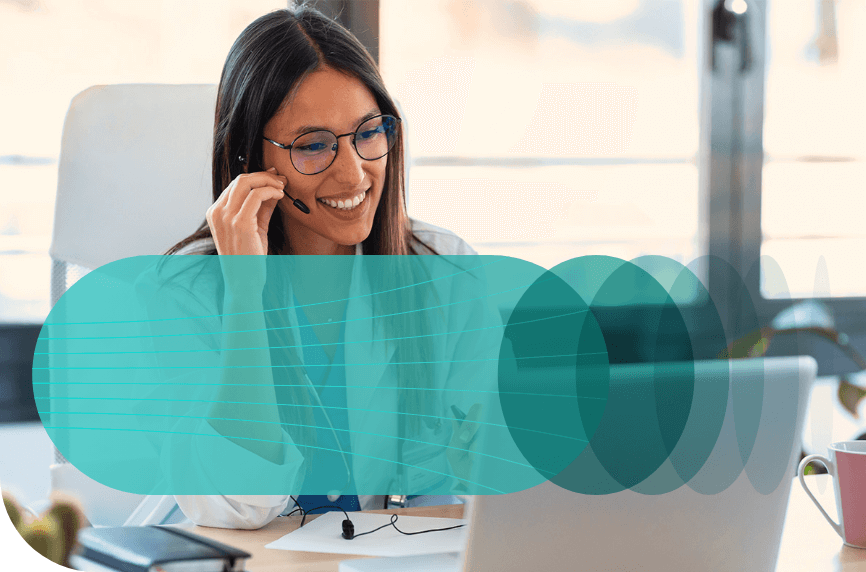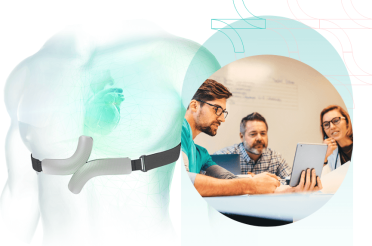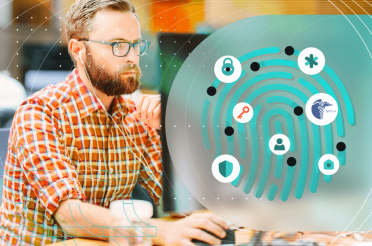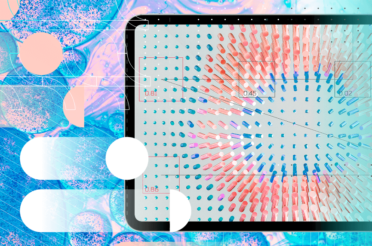Over the past two decades, the healthcare industry has experienced significant milestones, from the widespread adoption of personalized therapies to the challenges of the COVID-19 pandemic.
Although many see it as conservative and slow to change, the sector continues to evolve through technology. This progress drives modern advancements such as AI-driven drug discoveries and smart hospitals.
Thanks to growing health awareness, improved IT infrastructure, and Internet coverage, the USA digital health market size is expected to reach $549.1 billion by 2030.
In this article, we’ll discuss the top health technology trends today and see how they change the healthcare system.
-
Telemedicine expansion
Telemedicine, once an emerging practice, has now become a cornerstone of modern healthcare. It bridges gaps between patients and healthcare providers by offering remote consultations through text messages, video calls and phone connections on secure online platforms.
This healthcare technology trend gained traction during the 2020 Covid pandemic and continues to grow still. Experts all are of the same mind that telehealth services are fundamentally changing how healthcare organizations operate.
Telemedicine supports remote patient monitoring, which in turn helps doctors collect data and deliver personalized treatment plans. It eliminates geographical barriers and allows healthcare professionals to monitor patients’ conditions in real-time. Apps and platforms enhance Telehealth systems are also integrated with electronic health records (EHRs), which allows them to manage patient data and reduce the overall administrative burden, for instance.
The global mHealth apps market size reached $43.5 billion in 2022. Mobile health applications may connect electronic clinical devices with software and act as a standalone tool. For example, Healthsuite is a patient app that provides effective digital therapies for inflammatory conditions for Ampersand Health.
Healthcare organizations can use in-office telemedicine software integrated with EHRs to manage specialized programs such as chronic care management, principal care management, and transitional care management. This solution can support appointment scheduling and collect real-time health data from IoT devices to assist in diagnostics. It helps doctors save time and effort while introducing a new concept—the Internet of Medical Things (IoMT).
-
Online service portals
Telemedicine becomes more accessible through online service portals that give patients direct access to their health data, test results, and appointment scheduling. Often integrated with EHR systems, these platforms allow patients to refill prescriptions and manage healthcare expenses remotely.
Features like secure messaging and video calls streamline communication between patients and providers, while reminders for medication adherence improve the overall outcome of the care. These tools reduce the administrative burden for medical staff and make sure that they can focus more on patient care.
By incorporating online portals, healthcare providers enhance patient engagement and improve efficiency across their health systems. The growing popularity of these solutions signals a shift toward more inclusive and accessible healthcare services.
-
Remote patient monitoring
We cannot discuss telehealth and not mention its most prominent trend right now. Remote patient monitoring (RPM), powered by IoT, allows medical practices to monitor health data at a distance.
The RPM system relies on wearables that capture real-time patient data (e.g., heart rate, blood glucose level, arterial pressure, etc.) and send it to healthcare providers. This healthcare technology can track medication adherence, identify potential risks, and manage prescriptions.
RPM software processes telemetry data gathered by various devices to facilitate diagnostics and provide better treatment to patients.
Through utilizing artificial intelligence and predictive analytics, healthcare professionals can analyze data from wearables and sensor devices such as:
- Temperature and pulse trackers;
- Blood pressure and oxygen meters;
- Glucose sensors;
- Sleep monitors.
The healthcare industry has seen many innovations in remote patient monitoring in the last few years. Phillips introduced their ultrasound imaging innovation – Lumify – which allows the automatic transfer of ultrasonic sound information. The device is connected to a smartphone, thus broadcasting data directly to the medical professional.
Mobile apps connect medical devices that measure specific vital signs with healthcare provider systems. These applications are especially useful for patients with chronic and critical illnesses, as they collect health data and treatment details. Various system modules can receive alerts from the devices and display visual insights for healthcare providers.
-
Outsourced medical billing
The process of managing medical billing internally can be overwhelming, especially as healthcare organizations face increasing regulations and workforce shortages. Outsourcing billing processes to third-party providers allows medical professionals to focus on core responsibilities while ensuring timely claim submissions and reimbursements.
Advanced billing software integrated with cloud technology streamlines operations, as it reduces errors and improves revenue cycles. These solutions also alleviate the pressure on healthcare workers. Now they can dedicate more time to patient interactions.
With the global outsourced medical billing market projected to grow significantly, this healthcare technology trend represents a practical solution for optimizing financial operations and minimizing revenue leakage.
-
AI and machine learning in diagnostics
Artificial intelligence is a transformative force in all sectors in the economy – including the healthcare sector. It offers unseen-before capabilities to improve diagnostic accuracy and decision-making.
AI-driven tools analyze medical images. With that analysis, they identify patterns in patient data and enable accurate diagnoses. These advancements enhance the ability of healthcare professionals to detect potential health issues earlier and create personalized treatment plans.
Machine learning algorithms, a subset of AI, are also vital in predictive analytics. They analyze data collected from wearable technology and other medical devices to identify trends and forecast potential risks. This approach supports healthcare organizations in delivering more effective, preventive care.
Artificial intelligence can analyze databases of molecular structures and define those that might be useful in drug discovery. The deep neural network AtomNet showed promising results in this endeavor, as it processed millions of experimental measurements and protein structures.
When integrated into IoT devices, AI serves as a predictive analytics tool that collects and assesses data generated by human bodies. Thus, professionals can track chronic diseases and treat them before they become life-threatening. The combination of AI and personalized healthcare is the future of medicine, as this symbiosis creates a finely-focused treatment
For instance, the collaboration between IBM and Hardin Memorial Health gave birth to Patient Synopsis. This product digs into patients’ past diagnostics, medical procedures, and lab tests and summarizes the results to help professionals make well-informed decisions. AI also aids pharmaceutical research by streamlining the drug discovery process and expediting the creation of innovative treatments.
-
Wearable health devices
Wearable health devices are the most visible of the future trends in healthcare technology. These tools empower individuals to track physical health all the while healthcare providers monitor vital signs remotely. Devices such as glucose sensors, heart rate monitors, and oxygen trackers integrate with digital solutions to provide actionable insights.
That integration of health data analytics with wearable devices ensures real-time communication between patients and medical professionals. They make remote monitoring possible and thus reduce the need for frequent hospital visits through continuous data collection.
Wearables also improve patient trust, as they offer constant transparency and engagement. They ensure individuals actively participate in managing their overall health, supported by predictive analytics to address potential risks before they escalate.
-
Cybersecurity
As healthcare organizations increasingly adopt digital solutions, the importance of robust cybersecurity measures cannot be overstated. Protecting sensitive patient data from breaches and unauthorized access is vital for maintaining patient trust and meeting compliance standards like the General Data Protection Regulation (GDPR) and HIPAA.
Healthcare systems face risks from outdated software and cloud vulnerabilities. Solutions like data encryption, multi-factor authentication (MFA) are essential for protecting healthcare facilities. They must be reinforced by regular security audits and checks.
Biometric authentication and advanced threat detection tools help reduce those vulnerabilities. Ongoing monitoring and training for healthcare workers are equally important to maintain data security and optimize system resilience. Cybersecurity is not just about technology—it’s about creating a culture of safety in the healthcare landscape.
-
Blockchain for healthcare security
The more healthcare systems rely on digital solutions, the more healthcare technology trends change. That, of course, means that safeguarding sensitive patient data has become critical. Blockchain technology addresses this challenge with a secure, decentralized system for storing and sharing healthcare information. This innovation makes the security and integrity of healthcare data possible. That in turn strengthens the trust among patients and healthcare organizations.
Blockchain is a prime example of a tool that reduces administrative burden and prevents unauthorized access to patient data. It minimizes risks of data breaches through information encryption and the requirement of authentication protocols. Healthcare providers can confidently share records across systems while ensuring compliance with regulations like GDPR of the European Union.
Less administration ultimately means a healthcare organization and its managing director can have a much easier time when they aim to retain talent. Healthcare workers tend to seek a position where bureaucracy is as little as possible and they will choose to work in the place that offers them just that.
-
Biometric security solutions
Biometric security solutions are yet another method to protect sensitive patient data.
They address the risk of breaches by implementing advanced authentication methods like fingerprint scans, voice recognition, and facial identification, akin to the ones found on our phones. These systems are multi-purpose tools that can also benefit the staff, as access to data or facilities to members of the personnel is also significantly simplified.
Biometric tools align with the industry’s push for data security and reducing risks of breaches through strengthening infrastructure resilience. Healthcare facilities can balance innovation with accountability by embedding these solutions into daily operations.
-
3D printing in medicine
3D printing technology makes the medical industry much more accessible and personalized through the easy creation of highly customized solutions. This innovation is truly a swiss army knife – it can be applied in many ways – from producing prosthetics to manufacturing medical equipment and implants. Its ability to create complex structures with precision makes it invaluable in addressing diverse healthcare needs.
One example is the use of 3D printing to produce patient-specific implants and surgical guides. These personalized tools improve procedural accuracy, which in turn results in reduced recovery times and lower healthcare costs. In addition, medical institutions can utilize 3D printing to create prototypes for training and testing purposes.
-
Robotic surgery
Robotic surgery has become a hallmark of new trends in healthcare technology. It offers precision and minimally invasive solutions for complex procedures that were simply impossible before. These systems, guided by surgeons, provide enhanced control and stability in the operating room. The precision of robotic tools is so advanced that it can do surgery on objects as fragile as grapes.
Robotic surgery systems further allow for highly accurate procedures by integrating augmented reality (AR) and real-time data analytics. Healthcare facilities adopting robotic surgery experience significant advancements in patient care, which proves these latest technology trends in healthcare to be a game-changer for modern medicine.
-
Genomic medicine
Genomic medicine enables personalized treatment plans through the analysis of genetic information. It identifies genetic markers, which allows healthcare providers to predict risks and tailor therapies. This approach does wonders in improving efficiency and allows for targeted interventions in complex conditions, often aided by AI and predictive analytics.
The seamless integration of genomic data into EHR systems fosters collaboration among medical professionals, as information becomes seamless to access.
-
Virtual reality (VR) and Augmented reality (AR)
Virtual reality and augmented reality introduce tools that support medical training and education for both patients and young professionals. VR simulations prepare healthcare workers for complex procedures, while AR will offer real-time visual aids for surgeries and diagnostic processes.
These new technologies are bound to benefit more patients by creating new engaging aids, which can help them better grasp their health situation. This in term can help with pain management, for instance.
In addition to pain management, mental health treatments can also benefit immensely. Augmenting specific situations or scenarios can help psychiatrists better communicate with their patients and thus immensely improve their mental health treatment.
-
Nanomedicine
It may firstly sound like sending small little robots to do operations, but no. Nanomedicine is much less science fiction, but still as useful. It focuses on using nanoparticles to deliver targeted treatments to specific unreachable places, which means it is essentially the first smart pill.
This approach minimizes negative side effects from intervention and improves therapeutic outcomes in applications like cancer therapies and regenerative medicine. Combined with AI and digital solutions that can help navigate the particles, nanomedicine enhances the precision of care at all levels.
-
Mental health tech
For better or for worse, mental health has been an ever-growing sector in the healthcare industry. That brings with itself more and more innovation. Emotional well-being is now addressed in all sorts of new ways – from mobile apps to chatbots utilizing AI.
These tools provide accessible and private options for addressing anxiety, depression, and other conditions. Wearable devices and digital solutions enable healthcare providers to monitor patients’ mental and physical health simultaneously, creating a more integrated approach to care.
For example, platforms offering remote patient care allow users to access therapy sessions or guided meditations from anywhere, which significantly reduces barriers to treatment. This is further augmented through the combination of predictive analytics with personalized insights.
These tools empower medical professionals to craft interventions tailored to individual needs, making mental health care more effective and proactive, which is severely needed.
-
Smart hospitals
The concept of smart hospitals highlights the emerging trends in healthcare technology, where automation and connectivity redefine patient experiences. These facilities utilize IoT devices, electronic health records, and predictive analytics to ensure better operations and better health outcomes.
Imagine a hospital where patient data flows seamlessly between departments, wearable devices track real-time vitals, and AI alerts doctors to potential complications. These innovations not only improve resource allocation but also reduce administrative burdens for healthcare workers, allowing them to focus on delivering quality care.
Smart hospitals represent a shift toward more efficient and patient-centered healthcare systems.
-
Health information exchanges (HIEs)
Health Information Exchanges bridge the gap between the current fragmented information systems. They enable healthcare providers to access and share vital patient data across organizations and databases.
This seamless flow of information supports accurate diagnoses and ensures consistent care, even when patients visit multiple facilities, which happens increasingly often, as doctors have tended to work in several locations.
Providers can reduce redundancies and enhance the overall coordination between specialists and primary care teams By integrating said HIEs into the healthcare landscape. Such collaboration strengthens patient trust and the overall quality of care, which reflects the broader goals of the current technology trends in healthcare.
Innovate with RPM technology with the help of seasoned specialists Get ahead of your competition by being the first to understand how new healthcare technologies can improve your healthcare practice.

Conclusion
Healthcare providers should invest considerable amounts of money and resources to provide innovative, high-quality care and reach cost-effectiveness. That’s why innovation is not enough; execution is more important in order to stay with the healthcare trends
Only when you have a solid technological basis can you focus on providing better care and reaching business goals with minimum input. That’s why medical institutions need a trusted partner with experience in the healthcare sector that can provide an efficient software solution meeting industry standards.














